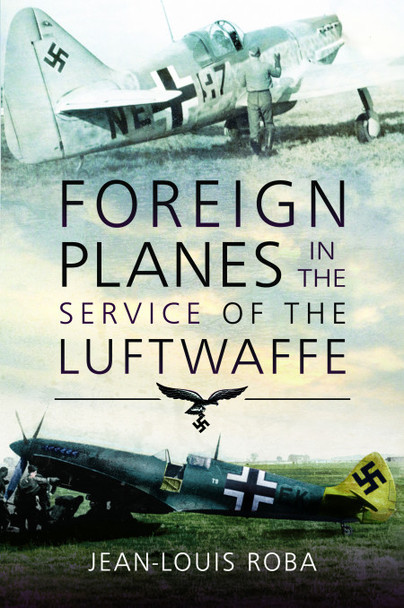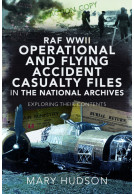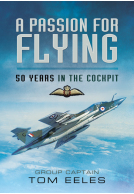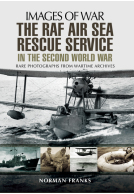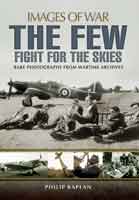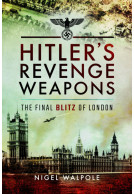Foreign Planes in the Service of the Luftwaffe (Paperback)
Imprint: Pen & Sword Aviation
Pages: 224
Illustrations: 100 black and white illustrations
ISBN: 9781526796448
Published: 4th November 2020
(click here for international delivery rates)
Need a currency converter? Check XE.com for live rates
| Other formats available | Price |
|---|---|
| Foreign Planes in the Service… ePub (47.0 MB) Add to Basket | £4.99 |
No airforce in the Second World War would make more use of captured planes than the Luftwaffe. With this in mind, Jean-Louis Roba has undergone a considerable amount of work in tracking down hundreds of aircraft used by the Luftwaffe and illustrating their uses, careers and eventual fates. The book examines the full history of foreign planes in the Luftwaffe, from its inception in the prewar years to the end of the Second World War. More than just an account of the Luftwaffe's use of captured aircraft, the book debunks myths about how prepared the Germans were for war in 1939, and shows how important even such an unreliable source of supplies as captured planes would become to the Luftwaffe. Translated into English for the first time, Roba's investigative work is supported by over a hundred pictures of the planes themselves, and gives a rare opportunity to see British and American planes repainted in German colours and symbols.
This is an excellent compilation of photos and text describing the aircraft from Austria, Czechoslovakia, Poland, France, Norway, Belgium, Netherlands, United Kingdom, Greece, Soviet Union, United States, Italy and Denmark absorbed by facist Germany during the Second World War. In his 12 chapters of 223 pages there are 409 black and white photos of aircraft brought on board: old, obsolete and front line planes pressed into service for training, liaison, supply and hacks as well as captured front line fighters and bombers. Nothing was ignored. All kinds of aircraft are discussed, service, sports, trainers, fighters, bombers and transports. Germany made the ultimate use of the airframes they obtained and the author shares his knowledge of the specified aircraft and their disposition, some being sold to Germany's allies, Finland, Romania and Italy and many evaluated for counter measures. It's quite the photo essay with lots of ideas for the scale modeller.
Gary Wenko, Japanese Aviation
"For anyone interested in non-traditional markings on aircraft, this is definitely well worth the time to pick up and pore over."
Internet Modeler
Read the full review here
...a nice one-volume photo album of captured aircraft.
Historical Miniatures Gaming Society
Click here for the full review
...an excellent reference and resource for both the interested reader and the modeler alike.
ModelingMadness.com
Click here for the full review
This book has a most unusual title and topic. Covering a subject that has had very little treatment, if any, since World War 2 (WW2) the author has produced a superb account. He has broken into an area that has been massively overlooked and it has surprising results for WW2 historians and followers. Given the high standard of research it is a welcomed addition to the literature available in English – it has just been translated into English.
Military Archive Research.com
No air force in WW2 made as much use of captured (enemy) planes as the Luftwaffe. The author has conducted intricate research in tracing hundreds of aircraft utilised by the Germans. Detailed consideration is given to the full history of foreign planes such as their uses, careers and eventual fates. The research is primarily photographic and there are outstanding photos that support the text. These photographs give an excellent opportunity to see rare images of British and American planes repainted in German colours and symbols.
The book shatters myths about how well the Luftwaffe was prepared for the start of World War 2. It shows how the Germans used captured planes as an important source of equipment and indicates how dependent they were on such unreliable sources of material.
The first chapter sets the scene before the war. The origins of the Luftwaffe using foreign planes can be traced to the Austrian Air Force’s usage of Italian (Fiat) machines. The Austrian forces were integrated with the Germans after the ‘Austrian Anschluss’. Before the war Czech planes were also used and there are some excellent photos of Bloch 200s.
The capture of French and Scandinavian planes early on in the war is discussed and the merits of these “acquisitions” for the Germans are evaluated. The campaign against the British Expeditionary Force and the great deal of plunder obtained by the Wehrmacht during the Battle of France is noted. The important capture of the Fokker and Aviolanda factories is also commented upon.
The Battle of Britain and the Blitz is given a full chapter. There are photos of Spitfires, Hurricanes and Wellingtons to name but a few. Some of these aircraft were integrated into the Luftwaffe and the author has discovered photographic evidence to prove this.
Operations Marita and Barbarossa are commented upon. Marita was the invasion of Yugoslavia & Greece but not a single enemy plane could be saved for the Luftwaffe during this campaign. At the start of Barbarossa the Germans overwhelmed many Soviet airfields and captured numerous planes of differing value. Modern MiGs were found alongside obsolete Polikarpovs. Although hundreds of planes were captured only a few of them entered service with the Luftwaffe – many were sold to the Finnish Air Force.
The author progresses through the war years and covers the invasion of Vichy France and Operation Torch (the Allied landing in North Africa). He details how many planes were captured but large numbers of them were not airworthy. Then he moves onto the Allied bombing campaign of the Reich and the aircraft captured during these raids. The effects of the Italian Surrender in September 1943 saw the Germans obtaining many Italian planes – estimated at 1,300 but about half of them were not fit to fly.
Then there is a discussion about the post D-Day situation as more and more USAAF planes were captured or crashing behind the German lines. Finally, the tide of the war changed and it was the Luftwaffe’s planes that were being captured by the Allies. The book then discusses their surrender and the victory for the Allies.
This is an interesting account of how the Germans obtained plunder and how they utilised it to their advantage. No other nation in the war used their plunder to the same extent and the book is an exceptional account of this. There is significant photographic evidence to support the text - it is a gripping read and very enjoyable.
Purely as a photo album of rare and interesting wartime photos this book would be hard to beat and it can be wholeheartedly recommended to anyone with an interest in World War Two aircraft and especially those with a penchant for the slightly 'different'.
Neil Robinson, Military Aircraft Monthly
An amazing collection of rare original Luftwaffe photographs of captured Allied aircraft in Luftwaffe service. A great reference for aviation enthusiasts and model makers. Highly recommended!
Control Towers.co.uk
About Jean-Louis Roba
Jean-Louis Roba is an accredited Second World War writer, having written numerous books and articles on the history of aircraft.







